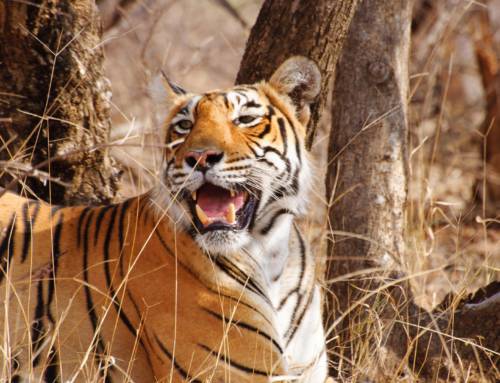Author: Aishwarya Anilkumar
Key highlights
- Shade coffee plantations have shown great promise in providing crucial habitats for biodiversity outside protected areas. Insectivorous bats are an understudied taxa, especially within coffee plantations.
- Bats were acoustically sampled in 20 coffee farm sites of Chikmagalur district in the Western Ghats biodiversity hotspot of India. A team of researchers investigated the relative roles of local features like shade tree density and landscape-level features such as distance to the natural forest in influencing aerial insectivorous bats.
- The study concluded that coffee farms offer an important commuting space for insectivorous bats across a gradient of shade management.
- The research also emphasizes the need for further study on species-specific responses and quantification of ecosystem services like natural pest control.
Agricultural landscapes hold immense potential for biodiversity conservation. In agroforestry systems, crops such as coffee and cardamom are cultivated below the canopies of shade trees (trees that offer shade to plants growing below them due to their large canopies). Intentional management of shade trees with crops has been shown to be particularly valuable to wildlife due to their structural similarity to forests, and significant vegetation diversity. Shade coffee plantations have shown great promise in providing crucial habitats for birds, bats, and arthropods. Bats are among the most diverse mammalian taxa in these systems. They also provide pest control services. However, insectivorous bats have been understudied in coffee plantations.
Scientists from the Centre for Wildlife Studies, Wildlife Conservation Society, National Centre for Biological Sciences, University of Leeds, and the Duke University, evaluated how bat species composition changed across sites in coffee agroforests in India’s Western Ghats biodiversity hotspot. They investigated the influence of local and landscape-level features of coffee farms on aerial insectivorous bats in Chikmagalur district, a significant coffee-growing region in the Western Ghats.
The bats were sampled acoustically, at varying distances from natural forest patches, in 29 coffee farm sites between 2015 and 2017. The study quantified the response of the number of bat species, and their activity, to changes in tree density, the proportion of built-up area in the neighbourhood, and the distance of the farm from forest areas. This fascinating research examined the relative roles of local features, including shade tree density, and landscape-level features such as distance to natural forest and proportion of built-up areas (buildings), in influencing aerial insectivorous bats.
Nine species of bats were detected across all 29 coffee plantation sites during the study period. The results showed that the tree density, distance from natural forest, and proportion of built-up area did not affect the assemblage or number of bat species or their activity. The species richness of bats was similar across forest fragments set in a matrix of coffee farms. This implies that a countryside ecosystem could reduce the contrast between forest areas.
The study concludes that coffee farms in the study area offer an important commuting space for insectivorous bats across a gradient of shade management. Farmer decisions in agroforestry systems are subject to non-biological considerations such as commodity price fluctuations, input and labour costs, which may be detrimental to biodiversity conservation. Hence the research emphasizes the need for further study on bat species-specific responses and quantification of ecosystem services, like natural pest control, to inform biodiversity conservation initiatives in the Western Ghats coffee landscapes. This can encourage farmers to balance these ecosystem services against economic factors while making decisions that could impact biological diversity.
Original Article: Ongole, S, Sankaran, M, Karanth, K.K. (2018) Responses of insectivorous bat communities to local and landscape-level features of coffee agroforestry systems in Western Ghats, India.
You can access the original article here.



